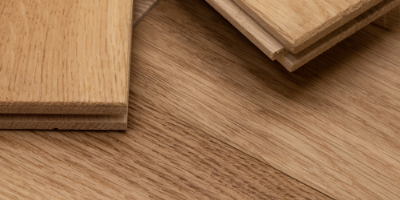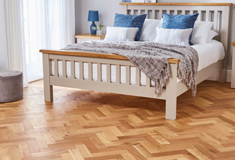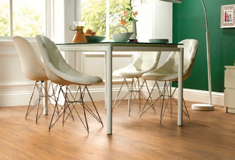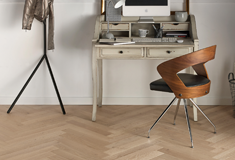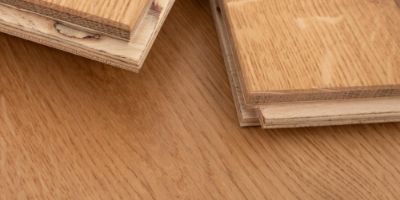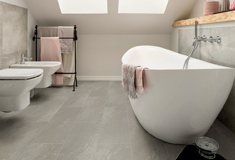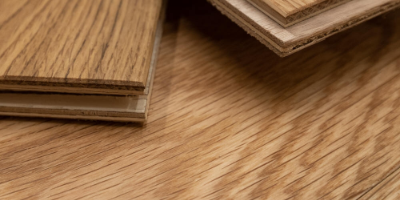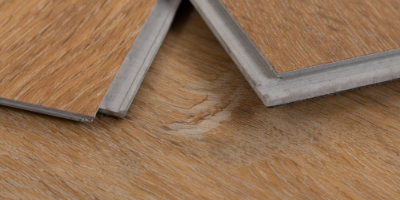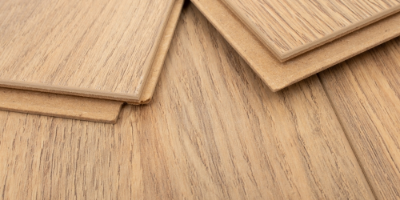Tongue & Groove vs Click Wood Flooring
Tongue & Groove vs Click Wood Flooring
Choosing the perfect flooring is an exciting part of any home improvement or renovation, but deciding which installation method to use is just as important! Opting for the right technique is essential, so be sure to consider your options before investing in a new floor.
Two of the main types of installation for flooring are Tongue & Groove and the click method, both of which are a secure way of laying your floor.
Each method has its own pros and cons, so depending on the nature and turnaround of your project, one technique might be more suitable than the other.
In this article, we’ll explore both methods allowing you to choose the one that’s right for you.
What is Tongue & Groove Flooring?
Tongue & Groove flooring is designed to interlock perfectly, and is a more traditional method of installation.
One side of the plank has a protruding edge, with the opposite side having a rebated edge, and when laid next to each other they fit together securely. This system creates a smooth floor with no gaps and ensures a polished and professional finish.
When it comes to learning how to lay Tongue & Groove flooring, there are a few different techniques. It can either be floated, nailed or glued down.
The floating method makes the most of this style of installation, as it doesn’t require nails or adhesives. That said, we always recommend applying a small amount of glue along the joins to help minimise movement of the planks in the future.
Pros of Tongue & Groove Flooring
There are many benefits of Tongue & Groove flooring:
- Fits together neatly, for a seamless finish.
- Cheaper than click wood flooring typically, so it may be more affordable for a bigger project.
- Can be installed over any subfloor.
- Less likely to work its way loose and squeak when using the floating installation method.
- Can be watertight when glued down.
- Able to fit over joists.
- Easy to maintain.
Cons of Tongue & Groove Flooring
To make sure you have the complete picture, here are the potential drawbacks to using Tongue & Groove flooring:
- More challenging to fit so installation can take longer (an experienced fitter may be required to get the finish you want).
- Repairs can be more difficult as you’re required to cut a board to lift it, or remove multiple boards, or even lift the whole floor!
Incorrect installation, such as using an insufficient amount of glue, could cause the boards to separate over time.
What is Click Wood Flooring?
Click wood flooring clicks into place thanks to machine-created interlocking joints. The joints provide a tight fit and a smooth finish with no gaps between the planks, making it a quick and easy installation method.
No adhesives are used when installing click flooring, which is why even a complete flooring beginner can master it!
Best floated with an underlay, click wood flooring can also be glued directly to the subfloor if required.
Pros of Click Wood Flooring
Here are the benefits of click wood flooring:
- Polished finish is ensured thanks to the way the flooring fits neatly together.
- Convenient and easy to install, requires less skill compared to Tongue & Groove flooring.
- No glue or nails required.
- Easy to care for and hardwearing.
- More straightforward to repair as you’re able to lift and relay boards, without cutting or lifting large parts of the floor.
Cons of Click Wood Flooring
There are some potential drawbacks to click wood flooring, depending on your project:
- More expensive than Tongue & Groove flooring, though as it’s easier to fit you could save on installation costs.
- Must be used in a floating installation meaning a high-quality underlay is required to ensure effective application.
- Can’t be fitted over joists.
So, which method should I choose?
Both methods can be quick and take a significantly shorter amount of time when compared to other installation techniques.
Click systems are the best choice for those laying their floor as part of a DIY project, as it requires less skill for fitting compared to a Tongue & Groove system.
However, Tongue & Groove can be installed over any subfloor, including joists, whereas a click system floor cannot. Each has its own benefits and at the end of the day, the results of both techniques can look fantastic. Plus, once installed no one would ever know which technique you’d used!
We’d Love to See the Results!
Determined to learn how to install Tongue & Groove flooring? You’ve got this!
We’d love to see how you’ve got on, so don’t forget to share your experiences with us.
Our team of flooring experts are always excited to see a project come together and are on hand to offer guidance and advice.
Plus, remember to follow us on Instagram for the latest news and discussions, as well as exciting additions to our range of Tongue & Groove flooring.

